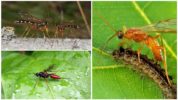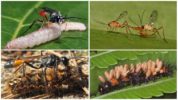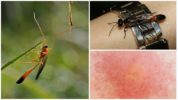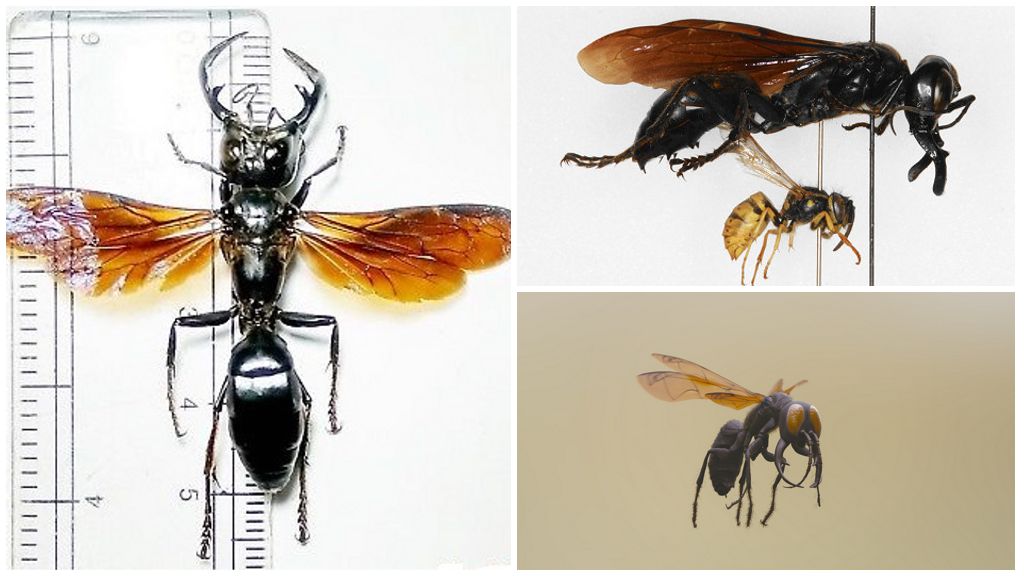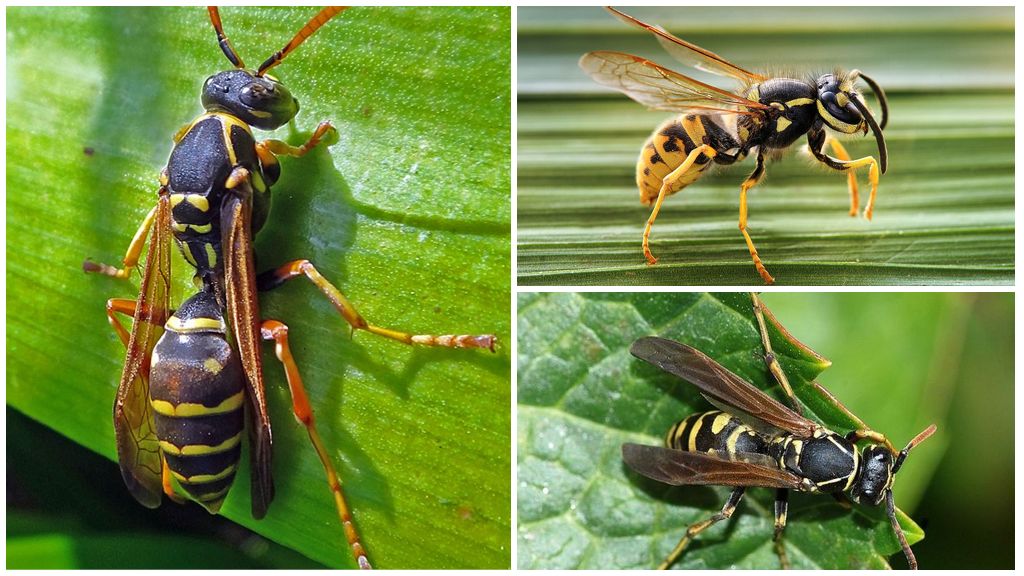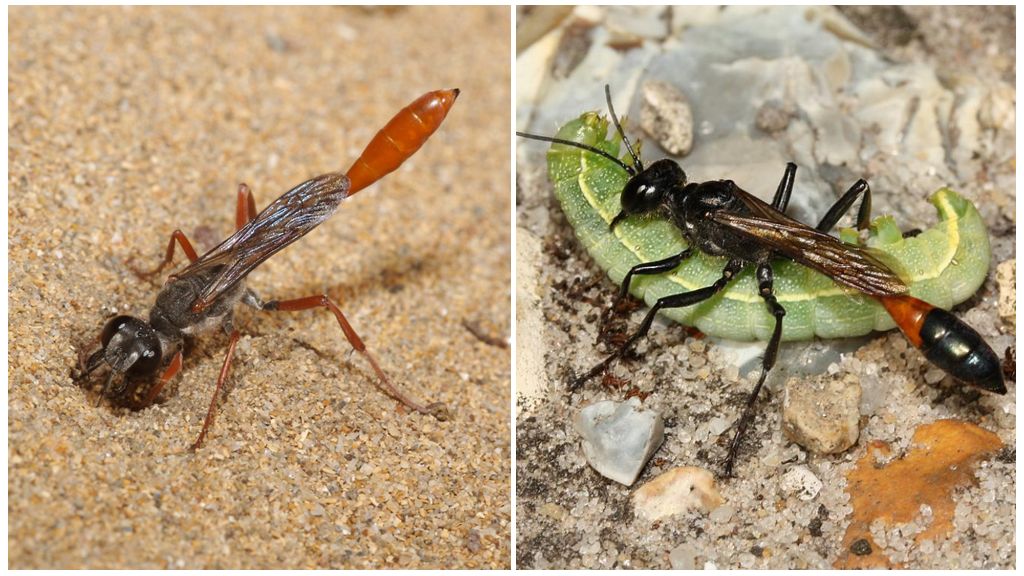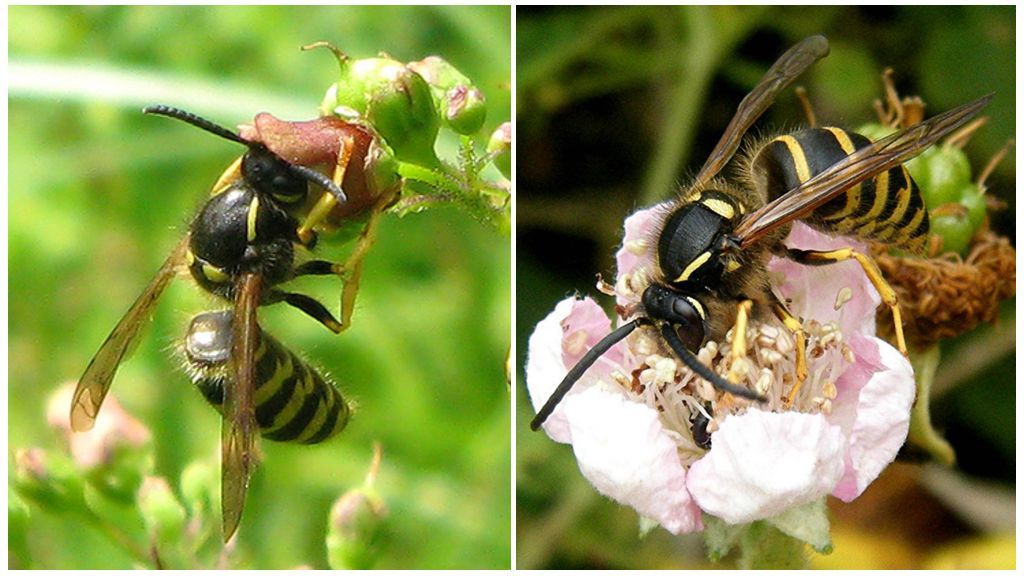- Wasp rider
- Horseman wasp breeding
- Rider Wasp Bite
Wasp rider different from ordinary public relatives size, appearance, structure, lifestyle. The infraorder of insects totals about 100 thousand species, belongs to parasites. The largest population lives in the tropics, only a few species live in temperate countries. Riding wasp parasitism consists in laying eggs on the body of insects, their larvae, or introducing them directly into the cavity.
Description of appearance
Absolutely all riders are small. Body length ranges from 3 mm to 3 cm. Large representatives live in countries with a hot climate. It differs in different types of color. Common features are an elongated abdomen, a thin waist, thin, transparent wings, which are more reminiscent of dragonfly flying accessories. In some species, wings are absent altogether; ant. Another representative has a long tail.
A distinctive feature of riders is the lack of stingsolely as an attack weapon. Instead, he uses an ovipositor. But secrets secreting a toxic substance are also available. With it, a wasp injects a parasite poisonparalyzes a potential victim, and then lays eggs. A photo of a rider wasp is presented below. The most amazing creature is a long-tail wasp.
Behavior features
The insect is a solitary wasp. Her behavior is connected with obtaining food, searching for potential victims, laying eggs. Wasp rider does not form nestsdoes not live in large families. Individuals do not communicate with each other, do not give each other signals of danger, the whereabouts of the victims.

The insect leads an active lifestyle in the daytime, at night prefers to hide among grass, leaves, sit on a tree. She tries to stay away from the person’s house because nothing attracts her there.
The imago feeds on fruit juices, nectar, and some representatives of the genus do not need to replenish food supplies at all, but live no more than 14 days. Riders are called predators because of the need to lay eggs in the body of other insects, arachnids, and worms.
On a note!
The wasp rider does not differ in aggressive disposition, but he feels the victim even under the bark of trees. Often he goes to the soil for searches, digs holes, as sand, earth wasps do.
Breeding
After mating the wasp, the rider begins to reproduce offspring. For our area, the mating season for riders begins in mid-summer. Until this time, the adult leads a carefree lifestyle, is content with nectar of flowers, plant juices.
For laying eggs, a victim is needed - a bug, a spider, a butterfly, a moth, a larva of large insects. First, the predator tries to bite, then flings the sting.
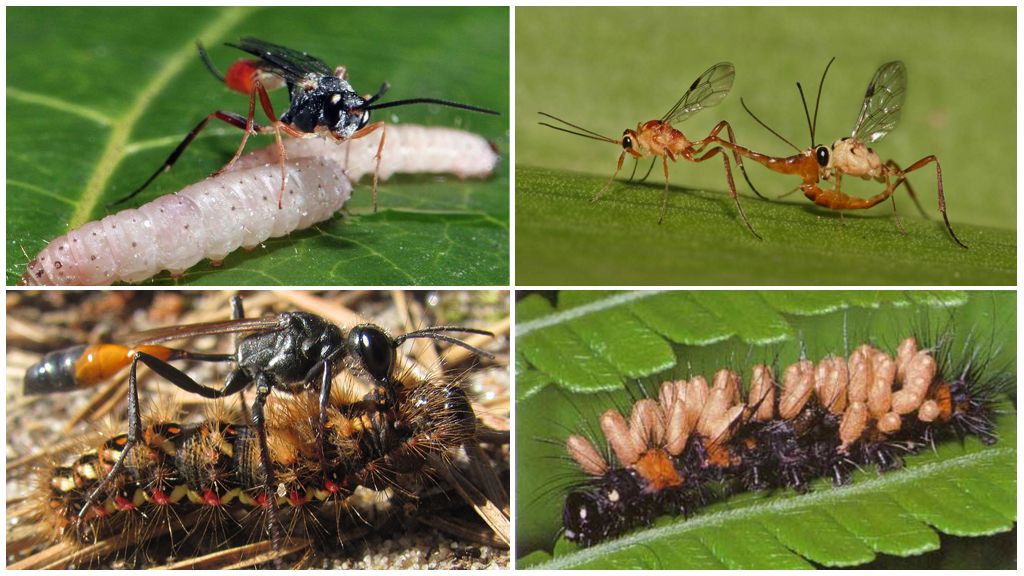
By the method of parasitization, riders are divided into several types:
- Ectoparasites. The female lays eggs on the surface of the abdomen, the larvae then gradually penetrate the body, devour from the inside.
- Endoparasites. The imago sticks a sting into the victim’s body, immediately lays eggs. Within a few hours, larvae appear that immediately begin to parasitize.
- Superparasites. The ovipositor is done both outside the chitinous cover and inside the body.Special is the fact that they hit their own kind, other parasites.
In the body of one victim, up to 20 larvae can parasitize. They actively eat, increase in size. In about 2 weeks, they complete their development cycle, leave the victim, or what is left of it, pupates. In tropical countries, an adult appears within a week, in our area, a hornet wasp hibernates in this state, and an adult individual leaves the cocoon in the spring.
Interesting!
Larvae eat the victim from the inside in a certain sequence. The most important organs are left in the end. The victim remains alive for a long time. But already at the end of the development of the larvae, only the shell remains from the victim.
The female’s mission is to search for prey, lay eggs, in the future the larvae develop without her participation. The female provides food for the offspring for the entire development cycle.
Rider Wasp Bite
All wasps hurt bitebut this does not apply to riders. The insect does not differ in aggressive disposition, is in no hurry to attack even if it is in danger. By all means trying to avoid a collision with a person, to hide from sight.
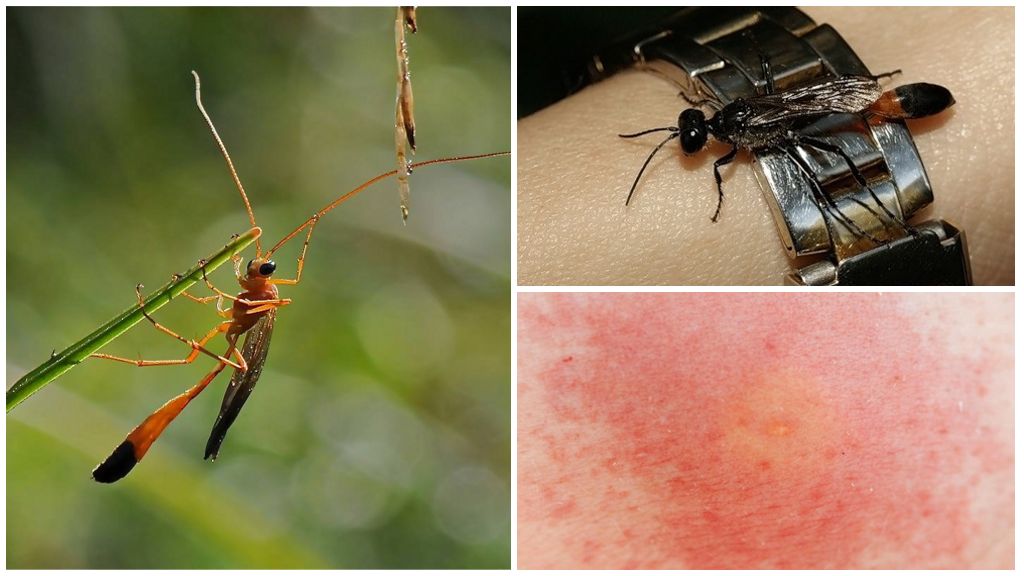
On a note!
In a situation where you have to bite, the wasp rider stings, but does not lay eggs, just injects a dose of poison. The rider’s bite is not so painful, more like an ant attack. Redness, slight swelling remains for some time, then itching appears. After a while, everything goes away.
Wasp rider does not pose a danger to humans, but especially sensitive people may experience allergic reaction different intensity. A large red spot, swelling, an additional rash appears at the site of the bite, in severe cases, deterioration of health is observed.
The bite of a rider is dangerous for many insects, which are garden pests. The settlement of the rider in the garden, the garden is only welcomed by man. Except in cases where an adult settles in an apiary. Bees can suffer from it.
What to do after a bite
After the wasp attack, you need to disinfect the wound, neutralize the effect of the poison. Use medical alcohol, ammonia, tincture of valerian, motherwort, glod, calendula. Apply a paste of baking soda, foam of laundry soap, toothpaste, shaving foam to a sore spot. Wipe with aloe juice, chamomile broth. Further actions depend on the clinical picture.
When a severe allergic reaction appears, an antihistamine should be taken - Claritin, Diazolin, Fenistil, ElCet. To process the skin with ointment, cream - Fenistil gel, Advantan, Elokom, Sinaflan, Triakkutan. Treatment should not exceed 5 days. In 2-3 days, the symptoms disappear. In difficult situations, you need to seek help from specialists. Wasp riders living in our area rarely provoke severe allergies.
